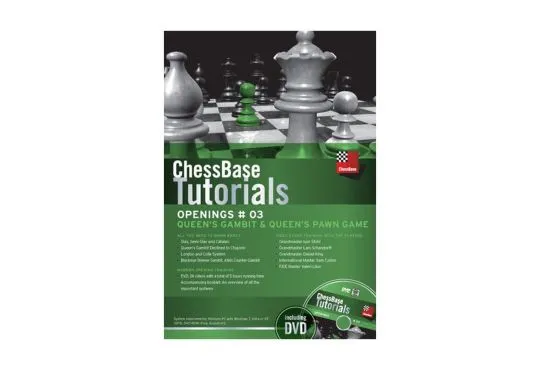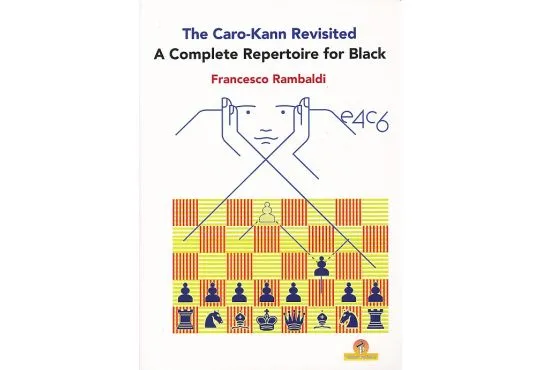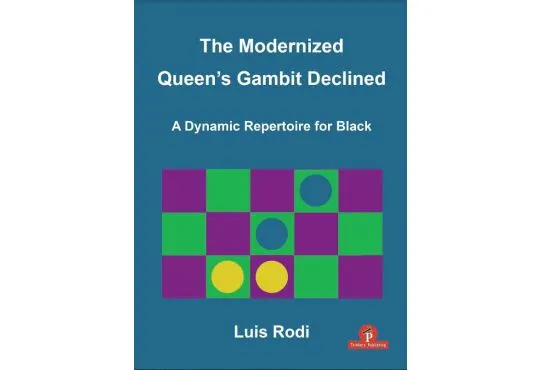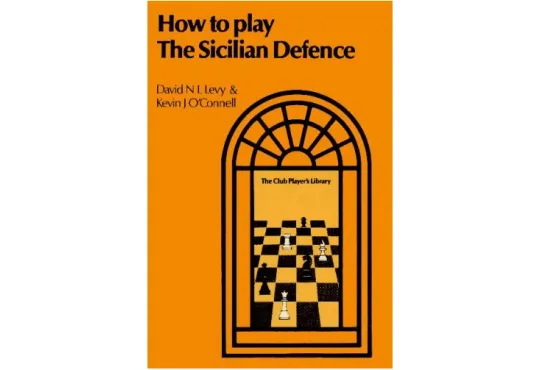The 5 Best Chess Openings for Black
What are the best chess openings for Black? White moves first and gets a head start in the opening. As a beginner, playing with black often feels like responding to white’s opening. Intermediate players soon learn that for a better chance of winning, you need to have your own repertoire of openings with the black pieces.
These are 5 chess openings for black, or defenses, that are considered some of the best. Openings require a lot of study to master, but this article will help you discover which one suits your style and the basic setups and variations for each one.

The Caro-Kann Defense
The Caro-Kann Defense is played by grandmasters and beginners because it is one of the best chess openings for black. The basic setup is easy to learn and provides a stable position for black, allowing you to gradually improve through positional play.
It is also not a passive opening. Black quickly fights for the center and in many variations captures white’s central pawns.
The Caro-Kann begins with the moves 1.e4 c6. White tends to fight for the center with d4 and black responds with d5.


Black quickly builds a strong pawn structure and attacks the pawn on e4. White has two pawns in the center, but immediately has to make a decision: defend the pawn on e4, take on d5, or advance on e5.
Sometimes white continues with f3 (Fantasy Variation) or Nc3 (Main Line), but most often they will take the pawn or advance.
Exchange Variation
When white takes your pawns on d5, we have the exchange variation.

Usually, this leads to a pretty symmetrical setup. For black, you simply need to develop your pieces, bringing out your knights, followed by your light-squared bishop, and then play e6 to defend your center.
From here, if white plays reasonably, the game is pretty well-balanced.
Advance Variation
If white advances to e5, black's strategy is still to develop the light-squared bishop, play e6, and eventually play c5.
You can gambit a pawn by immediately playing c5. If white takes you can develop your knight to c3, bring out your bishop (pinning the white knight if possible), and attack white’s isolated pawns.


In the position on the right, white has played a bad move leaving one pawn undefended and another that is weak considering the threat on the knight on f3. In many positions in the Caro-Kann, you will have the opportunity to win one or even two central pawns, leading to a favorable endgame.
Take a look at a more detailed guide for dealing with other variations like the Fantasy, Panov-Botvinnik Attack, and Two Knights Attack.
Queen’s Gambit Declined
The Queen’s Gambit is a common opening for white that begins 1. d4 d5 2. c4 …
To accept the gambit, black takes on c4. The problem with this is that white can now play e4, developing two central pawns. The pawn on c4 is extremely vulnerable.

This is why it is often simpler to decline the gambit, most commonly with e6. This is much more solid for black and allows both players to develop their pieces naturally. The main downside is that black has blocked in the light-squared bishop, but as the game progresses you can find a good way to develop it.

Here, black has a very strong pawn structure and good opportunities for development.
Albin Counter-Gambit
For a more aggressive way to decline the Queen’s Gambit, you can play the Albin Counter-Gambit with e5.

If white takes on d4, you can take back with the queen and then you are threatening d4 with the queen and the pawn.
More often, white will take on e5. This allows you to advance your pawn to d4, which makes it difficult for your opponent to develop and gives you some opportunities to create traps. (See the Lasker Trap).
Further reading: How To Play A Queen's Gambit Declined
-
 CLEARANCE - CHESSBASE TUTORIALS - Queen's Gambit and Queen's Pawn Games - VOLUME 3Special Price $15.00 Regular Price $33.95
CLEARANCE - CHESSBASE TUTORIALS - Queen's Gambit and Queen's Pawn Games - VOLUME 3Special Price $15.00 Regular Price $33.95
The Scandinavian Defense
The Scandinavian seems to contradict some beginner chess rules. Nevertheless, it is a solid opening with interesting variations and one of the best chess openings for black. Thankfully, it is simple to learn. It is a great way to create an open position and win chess matches.
It starts with 1. e4 d5.


Once white takes, you are usually going to recapture with the queen. While not a strict rule, beginners are generally advised not to develop the queen too early. In this case, the queen can easily evade attacks and black can develop a strong defensive setup.
Here’s one variation:
1. e4 d5. 2. exd5 Qxd5 3. Nc3 Qa5 4. d4 Nf6 5. Nf3 Bg4 6. Be2 e6 7. Bd2 c6

White has developed more of its pieces, but black’s pawn structure is very solid. The queen may look vulnerable, but if white moves its knight from c3, the black queen can easily move back to d8. From here, black simply needs to develop the rest of its pieces and castle.
The Scandinavian is a popular choice for beginners because getting through the opening with an equal position is usually not too difficult. There is minimal theory and a few sharp tactics for white to watch out for.
Further reading: Understanding the Scandinavian
-
 CLEARANCE - The Scandinavian - The Easy Way - Andrew Martin - 2nd EditionSpecial Price $15.00 Regular Price $30.95
CLEARANCE - The Scandinavian - The Easy Way - Andrew Martin - 2nd EditionSpecial Price $15.00 Regular Price $30.95
The Sicilian Defense
The Sicilian is a classic and must be included in any list of the best chess openings for black. It is deeply theoretical with many variations and is considered a challenging opening to master. Nevertheless, getting to grips with the basics can expand your knowledge of opening theory and could give you another weapon in your opening arsenal.
It begins with 1. e4 c5.

From here the Sicilian can progress in a variety of ways. The two main categories are the Open and the Closed.
The Open Sicilian
The Opening Sicilian involves white playing a variation in which white plays d4 and trades a central pawn. For example:
1. e4 c5 2. Nf3 Nc6 3. d4 cxd4 4. Nxd4 …

Here black should not take with the knight, but there are variations with e6, Nf3, and g6 (intending to fianchetto the bishop, which is the setup for the Accelerated Dragon Sicilian variation).
The Closed Sicilian
The Closed Sicilian happens when white doesn’t develop the knight on f3 or trade pawns on d4. Instead, white plays Nc3, and black will usually respond with Nc6. The open Sicilian has a lot of tricky and attacking variations for black, and the closed is a way for white to solidify the position.

Often play will develop symmetrically; both players will fianchetto their bishops and navigate a slower, more strategic line.
Further Reading: How to Play the Sicilian Defense
The Grünfeld Defense
For those of you tired of dealing with the intricacies of the Queen’s Gambit or trying to break down the London System, the Grünfeld Defense is a great alternative against d4.
The opening starts with 1. d4 Nf6. and the idea is to progress to 2. c4 g6 3. Nc3 d5.


White is given strong central control, but black develops a counterattack with the pawn on d5 and the plan to fianchetto the bishop on g2. Often, white will suddenly have to be defensive to try and hold on to its central pawns.
-
 CLEARANCE - Queen's Gambit Declined Exchange Variation - Nigel DaviesSpecial Price $15.00 Regular Price $30.95
CLEARANCE - Queen's Gambit Declined Exchange Variation - Nigel DaviesSpecial Price $15.00 Regular Price $30.95
The Grünfeld is what’s known as a hypermodern defense. The logic of hypermodern openings is to focus on finding new ways to fight for the center often using flank control and fianchettoed bishops.
Further reading: Opening Repertoire - The Grünfeld Defence
Exchange Variation
By exchanging the pawns and attacking the black knight, white can quickly develop a strong center.
4. cxd5 Nxd5 5. e4 Nxc3 bxc3
After these moves, black will begin its counterattack by fianchettoing the bishop on g2. White will continue to develop its pieces and black will begin to put pressure on the d4 pawn, with moves c5 and Nc6.


This variation will continue with white defending its central pawns. Black has many options to attack and can keep applying pressure. If white plays inaccurately black can quickly get a significant advantage.
Of course, white does not need to capture the first pawn on d5. It can develop its bishop and fight for the center in different ways.
Winning With Black: Choose Your Chess Defense
These are five excellent chess openings for black against e4 and e5. They require study and practice to get them right, but for many of them, the theory is quite simple.
There are many other defenses not mentioned here. For example, the French Defense is also very solid and is played at every level. Take time to explore openings. Rather than memorizing moves, study to understand the point of each opening. This will make you a better chess player at every stage of the game whether you're playing with the white or black pieces.
Frequently Asked Questions
There are many excellent openings to use when white brings out its queen’s pawn first. Responding with d5 is the most common, but other options like Nf6 are often more challenging for white to deal with. This includes the Grünfeld, Nimzo-Indian, the Queen’s Indian, and the King’s Indian.
Gambit openings are often not quite as solid for black, but there are many legitimate options to explore. This includes the Stafford Gambit, the Albin Countergambit (against the Queen’s Gambit), the Englund Gambit, and the Budapest Gambit.
White plays first and has a small advantage. This is why when high-level chess engines play against each other, white tends to win more games. Practically, up until the advanced level, this advantage is not significant. Black can quickly create equal positions or gain an advantage in the opening.









